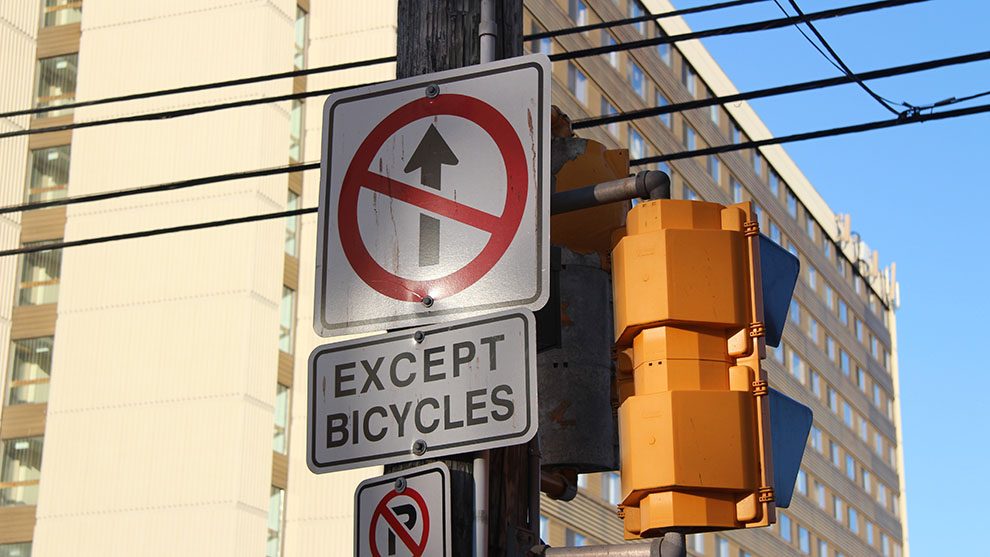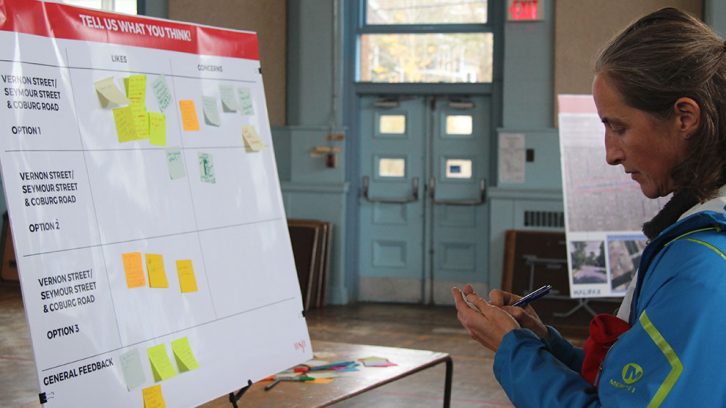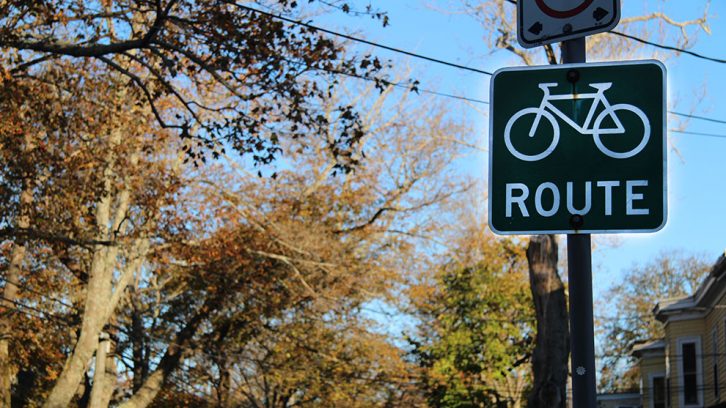Cycling
Proposed local street bikeways aim to divert Halifax drivers
Street redesigns could build links in citywide bike network

caption
This stretch of Vernon Street sees more than 3,500 vehicles per day.
caption
This stretch of Vernon Street sees more than 3,500 vehicles per day, according to municipal data.Intersections around Quinpool Road could be redesigned to make streets quieter for cyclists, says David MacIsaac, active transportation supervisor at the Halifax Regional Municipality.
HRM proposed changes in which streets are “optimized to make it safer and more comfortable for people to bicycle on,” said MacIsaac.
Large maps and street mock-ups of Vernon-Seymour and Allan-Oak streets were displayed around the gym at St. Andrew’s Church in Halifax on Wednesday afternoon. People clustered around the displays to discuss two “local street bikeways.”
Vernon and Seymour streets run north-south, below Quinpool Road; Allan and Oak Streets run east-west, parallel to Quinpool Road. Related stories
Raised medians, signs and sensor-activated lights are among the options being considered. MacIsaac said bikes and cars would still share the road, but cars that use the streets as through-routes would be diverted away. With fewer cars, a local street bikeway wouldn’t necessarily need a bike lane.

caption
During afternoon rush hour, about 150 cyclists pass through the Vernon Street and Quinpool Road intersection.MacIsaac and his colleagues gathered feedback on sticky notes and survey forms. He said it will be taken into consideration before his team reports to council.
Street designs and surveys are available online.

caption
Alison Thompson gave her feedback at Wednesday’s public consultation.The municipality’s cycling infrastructure is “about 20 years behind the times,” said cyclist Alison Thompson. She said she doesn’t like bike lanes because cars park in them or open their doors into them. Intersections are where cyclists need help, she said.
Cheryl MacRae lives on one of the streets mentioned in the proposal and worries that she’ll be made to drive in circles.
Coburg Road resident Ian Austen was also at the consultation. He said he gives the proposal his full support. Even though he doesn’t get around by bike, he finds it’s important to connect bike-friendly streets so cyclists don’t have to “portage” across areas that aren’t safe.
MacIsaac said local street bikeways could be safer for pedestrians, too.
Natalia Diaz-Insense is the youth active transportation co-ordinator at the Ecology Action Centre. She attended the consultation on behalf of LeMarchant – St. Thomas Elementary School, which is one block away from Vernon Street. She said parents are nervous about letting their children walk to school, and safer pedestrian streets would help those kids a lot.
Parking on Vernon-Seymour and Allan-Oak streets would be affected minimally, if at all—depending on the final designs, said MacIsaac.

caption
Vernon street is already designated for cyclists, but MacIsaac said HRM wants it to be safer for cyclists of “all ages and abilities.”MacIsaac said the Allan-Oak and Vernon-Seymour corridors would link to a larger network. Some pieces already exist — like the Windsor Street and University Avenue bike lanes. The rest, he said, can be expected within the next five years.
Planning for a network
Michael Wexler is an urban planner and designer for Copenhagenize in Montreal. The consultancy firm specializes in urban cycling. In a phone interview with The Signal, Wexler said the best way to encourage urban cycling is to have streets with low and slow traffic, connected by safe intersections.
“The biggest problem that North American cities are still facing is they’re building a corridor here, a bikeway here, and they’re not planning as a network,” he said. “If you were taking a train and it just stopped halfway and then you had to run along the tracks for a while, I mean, nobody would use that train.”
HRM’s proposed changes are part of a larger plan the municipality created in 2006, and updated in 2014, to facilitate more walking and biking. Ninety-three kilometres of bike lanes have been created over the last 11 years.
Once designs are finalized and approved by regional council, changes to Vernon-Seymour and Allan-Oak streets could be made next year.

